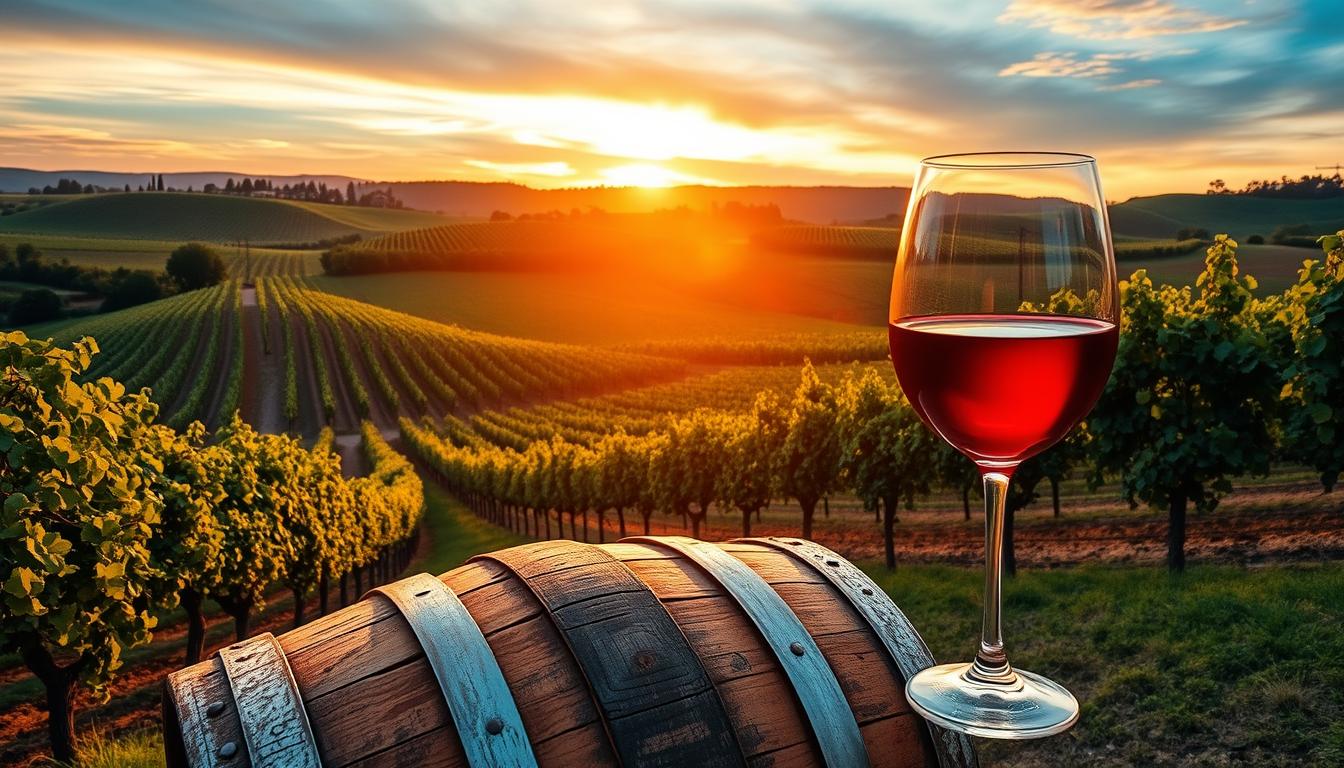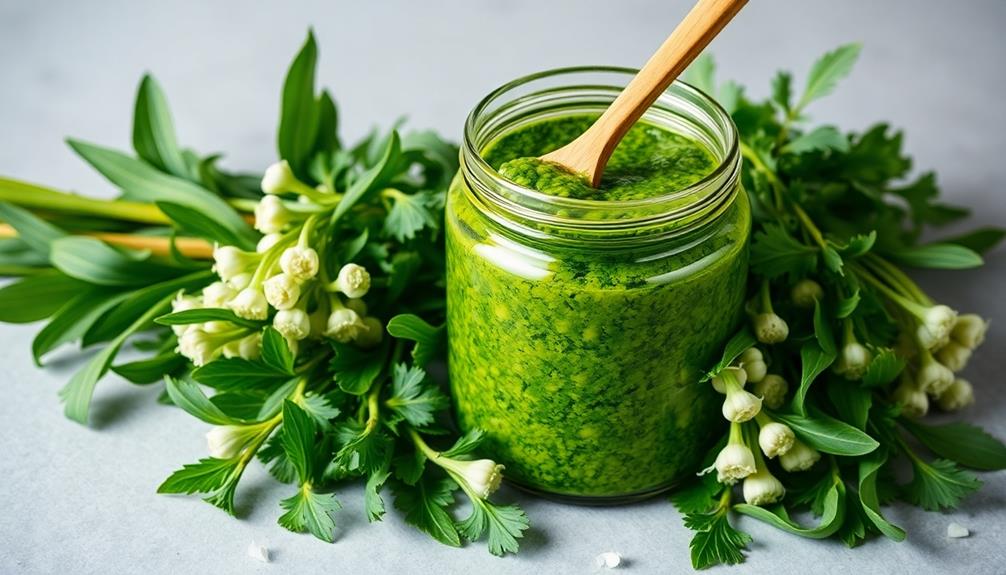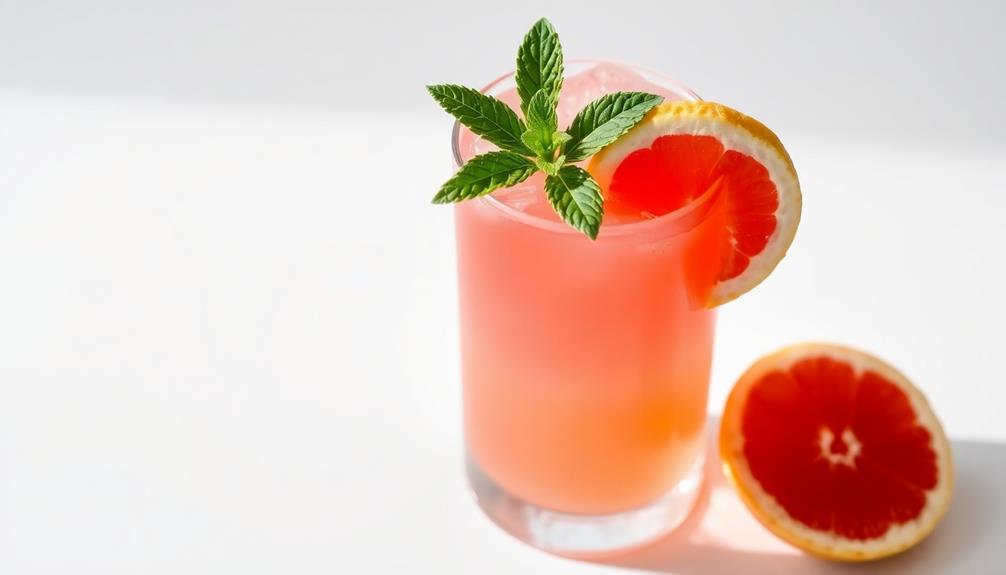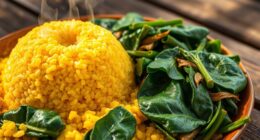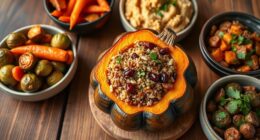Imagine a moment when you uncork a bottle of wine, the aroma swirling as you pour it into your glass. This isn’t just a drink; it’s an experience waiting to be explored. As you take that first sip, flavors dance on your palate, inviting you to dive deeper into the captivating world of wine. Whether you’re a seasoned enthusiast or a curious beginner, the journey through vineyards around the globe offers a unique adventure that stirs the senses and ignites the soul.
From the ancient Egyptians, who revered wine as a divine offering, to the modern vineyards of Napa Valley, where each bottle tells a story, the evolution of wine is as rich and complex as the beverages themselves. With each glass you indulge in, you reveal a tapestry of history and culture, intertwined with lush landscapes and passionate craftsmanship. Take a moment for yourself, and let the magic of wine transport you beyond borders, into a realm of flavors and experiences that await. Get ready to sip, savor, and explore the world of wine!
Key Takeaways
- Wine offers a unique experience that engages the senses.
- Each bottle tells a story, connecting ancient traditions to modern craftsmanship.
- Exploration of wine can enhance any meal, elevating it to gastronomical heights.
- There are various types of wine, each suited for different occasions and preferences.
- The wine world is filled with surprises, making it perfect for every palate.
- Modern wineries, like Archer Roose, adapt their offerings to local environments for a fresh taste.
The Fascinating History of Wine
The journey of the history of wine spans millennia, starting with ancient civilizations who laid the groundwork for today’s modern winemaking. Wine has played a pivotal role in various cultures, showcasing its importance in social, religious, and daily life. Not only has this legacy shaped our appreciation for wine, but influential figures in wine have also played an essential part in its evolution over the ages.
From Ancient Civilizations to Modern Winemaking
Early evidence of wine production reveals that humanity has been cultivating grapes for thousands of years. Discoveries of pottery jars in Georgia, dating back over 8,000 years, show the ancients’ initial foray into fermentation. Mesopotamia marks a significant milestone in the history of wine, with the Sumerians using clay amphorae around 4,000 BCE for fermentation and storage. In ancient Egypt, wine was not just a drink; it represented prestige associated with royalty and elite societal classes, often depicted in magnificent scenes within pharaohs’ tombs.
Greek culture celebrated wine through mythology, attributing its origins to the divine Dionysus while simultaneously improving winemaking techniques. This paved the way for the Romans, who extended viticulture throughout their empire, introducing techniques, grape varieties, and practices that are still evident in today’s modern winemaking.
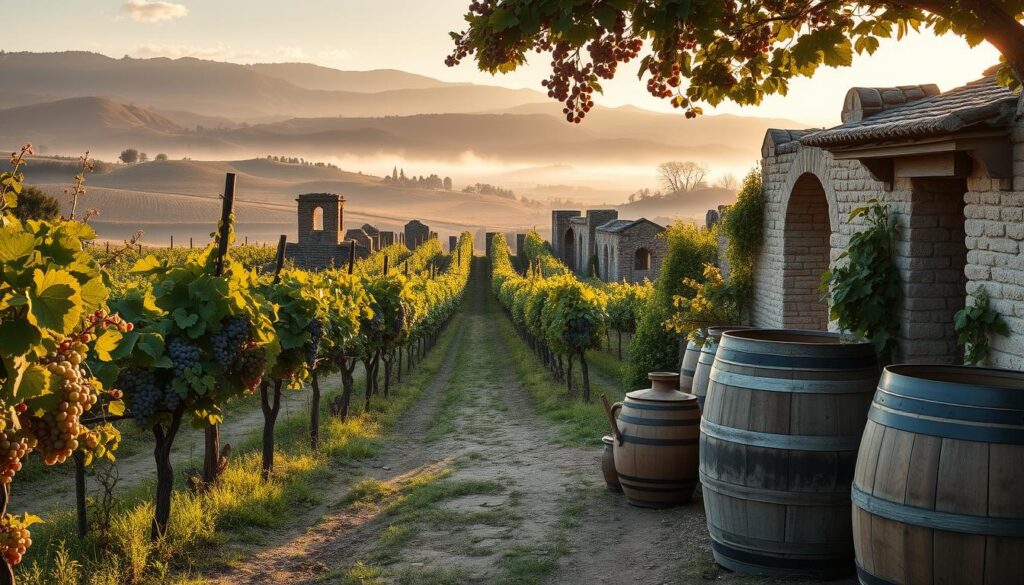
Influential Figures in Wine History
The Middle Ages saw the Catholic Church significantly influence wine consumption, using it in religious ceremonies. Monastic orders like the Benedictines and Cistercians became vital in preserving winemaking knowledge, documenting methods, and enhancing the art of viticulture during this period. Their contributions were essential, particularly as wine consumption became a symbol of wealth enjoyed by the upper classes in feudal society.
The Renaissance brought forth notable advancements in winemaking. Scholars began experimenting with new grape varieties, vineyard management, and aging practices, influencing the trajectory of wine production. Modern wine has evolved significantly, embracing sustainable practices and technological advancements, reflecting a remarkable journey from ancient civilizations to contemporary winemaking. The integration of these practices continues to shape the global wine landscape today.
Understanding Different Types of Wine
Exploring the diverse world of wine offers a delightful journey through various flavors and characteristics. Each category of wine, including red wine, white wine, and sparkling wine, possesses unique traits that appeal to different palates. Understanding these wine varieties enhances your appreciation and helps guide your selections.
Red Wine: Varieties and Flavor Profiles
Red wine is celebrated for its robust flavors and rich tannins, which contribute to its complex profile. Popular varietals such as Cabernet Sauvignon, Merlot, and Zinfandel showcase a range of characteristics from firm and leathery to fruity and spicy. Tannins, naturally present in grape skins, give red wine its structure, making it a favorite for many wine drinkers.
- Cabernet Sauvignon: Known for its full body and depth of flavor.
- Merlot: Typically softer and rounder with fruity notes.
- Zinfandel: Offers a medium to full-bodied experience with jammy fruit flavors.
White Wine: Unique Characteristics
White wines are often recognized for their crispness and refreshing acidity. Varietals such as Chardonnay, Riesling, and Sauvignon Blanc highlight diverse profiles; from the oaky richness of Chardonnay to the tartness of Sauvignon Blanc. These wines are often described as being bright and zesty, making them perfect for warm weather sipping.
- Chardonnay: Can be full-bodied and buttery when oaked.
- Sauvignon Blanc: Known for its lively acidity and herbal notes.
- Riesling: High in acidity, with variable sweetness levels.
Exploring Sparkling Wine and its Regions
Sparking wine adds a celebratory touch to any occasion. Ranging from dry to sweet options, these wines often feature lively bubbles that enhance their appeal. Renowned regions for sparkling wine production, including Champagne, offer unique flavors influenced by the grape varieties used, such as Chardonnay, Pinot Meunier, and Pinot Noir. Each sip presents a delightful experience, whether it’s the classic Champagne or a refreshing Cava.
| Type of Wine | Common Varietals | Tasting Notes |
|---|---|---|
| Red Wine | Cabernet Sauvignon, Merlot, Zinfandel | Fruity, spicy, with earthy undertones |
| White Wine | Chardonnay, Sauvignon Blanc, Riesling | Crisp, tart, with notes of citrus and stone fruits |
| Sparkling Wine | Champagne, Prosecco, Cava | Effervescent, fruity, often toasty or nutty |
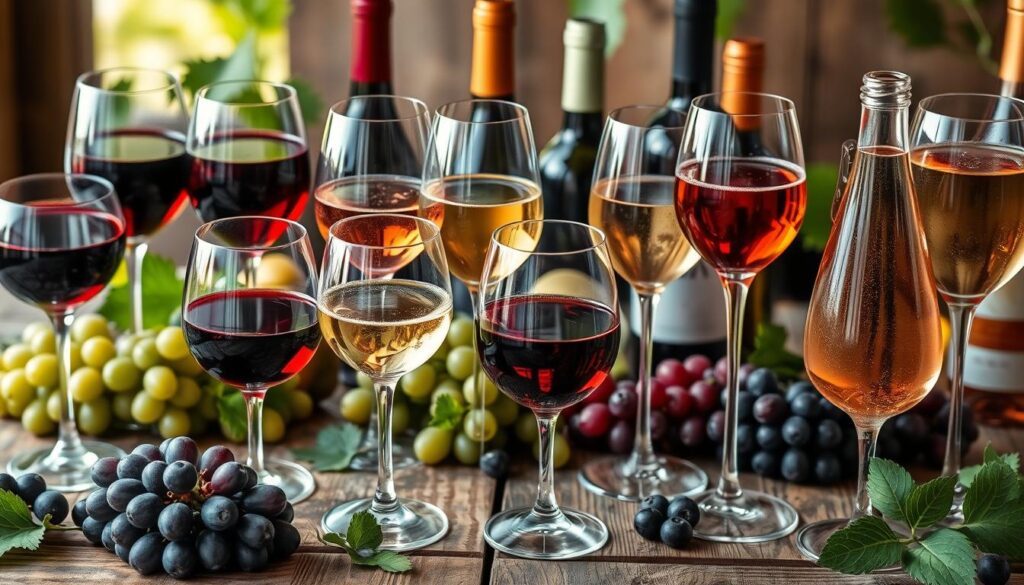
The Art of Wine Tasting
The journey of wine tasting is an enriching experience, engaging your senses and enhancing your appreciation for this beloved beverage. Effective preparation and understanding key concepts can significantly elevate your enjoyment and skills. By following essential steps, you unlock the nuances of wine and foster a successful wine tasting experience.
Steps to a Successful Wine Tasting Experience
Engaging in wine tasting revolves around several crucial steps that help you dissect a wine’s character and craft a personal connection to it. Begin with:
- Selecting the Right Glassware: Optimal glassware enhances aromatics and allows for better visualization.
- Observing the Wine: Take note of the color and clarity, which gives insights into its age and possible flavors.
- Swirling the Wine: This technique oxygenates the wine, releasing essential aromas and improving taste.
- Smelling the Wine: Identifying various scents enriches the sensory experience, stemming from grape compounds, fermentation, and aging.
- Tasting the Wine: Focus on structure, sweetness, acidity, and tannins for a comprehensive exploration of flavors.
- Savoring Before Concluding: Assess balance and finish, which can inform you about its overall character and quality.
Practice proves invaluable in this art. The more you taste, the better you engage with multiple senses, unveiling deeper layers of flavor and aroma that contribute to a wine’s allure.
Tasting Terminology You Should Know
Familiarity with tasting terminology enhances your capacity to articulate experiences during wine tasting. Here are some essential terms:
| Tasting Terminology | Description |
|---|---|
| Body | Refers to the weight and fullness of the wine in your mouth. |
| Acidity | Acritical for balance, it affects the wine’s freshness and crispness. |
| Tannin | Gives astringency, influencing the wine’s mouthfeel and aging potential. |
| Finish | The lingering sensation of flavors after swallowing, indicating quality. |
| Bouquet | The complex aromas that arise from aging, often in oak barrels. |
As you deepen your understanding of these elements, you will find the ability to navigate the rich world of wine with greater fluency and confidence. Knowledge of tasting terminology not only enhances conversation but also deepens your appreciation during each wine tasting adventure.

Wine Pairings for Every Occasion
Mastering wine pairings enhances any meal or gathering. Understanding how to pair wine with food is essential for creating memorable dining experiences. This guide highlights the fundamental principles behind successful pairings, emphasizing the importance of matching the weight and intensity of the food and wine. Classic pairings remain popular, but the beauty of wine lies in its versatility, allowing for creative interpretations based on your preferences.
Pairing Wine with Food: A Guide
Seasonal considerations can dramatically influence your choices. In spring, light and fresh white wines like Sauvignon Blanc and Chardonnay complement salads and vibrant spring vegetables. Summer invites you to enjoy chilled whites and Rosés, such as Pinot Gris, alongside grilled foods. Sparkling wines, particularly Brut, add a festive touch to summer celebrations with their refreshing acidity.
As fall arrives, reaching for full-bodied reds like Cabernet Sauvignon pairs beautifully with hearty dishes, including roast meats. Winter encourages indulgence, where bold reds like Syrah match well with rich, filling meals, while Chardonnay completes creamy soups and roast chicken. For those sweet endings, consider pairing a Port or Zinfandel with dark chocolate desserts.
Classic Wine Pairing Examples
Classic pairings embody timeless flavors. For instance, a robust Cabernet Sauvignon harmonizes with aged cheddar or Gouda, creating a delightful wine and cheese experience. When savoring oiled or buttery seafood, opt for a Chardonnay, which enhances the dish’s richness. Grilled steaks beg for a full-bodied Merlot or Syrah, bringing out the savory notes of the meat.
For pasta lovers, a Chianti thrives alongside tomato-based sauces, while a creamy Alfredo pairs flawlessly with Chardonnay. Celebrate life’s milestones with Bordeaux or Champagne, perfect for impressing guests during birthdays or anniversaries. Don’t forget the joy of brunch; sparkling wines like Prosecco complement eggs and light dishes beautifully, making every moment special.
When you seek to pair wine with food, the exploration of flavors is both an adventure and an art. Let your preferences guide you, and enjoy the journey through taste and experience.
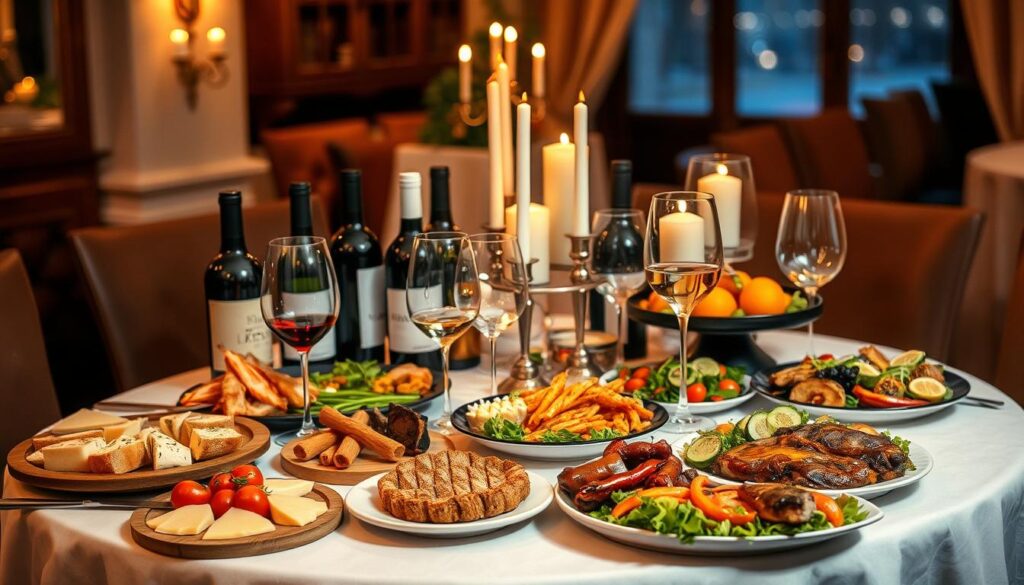
Exploring Vineyards and Wineries
Visiting renowned vineyards and wineries around the globe immerses you in the rich tapestry of wine culture. Top wine regions such as Bordeaux, Tuscany, and Napa Valley not only boast exquisite wines but also provide breathtaking landscapes and intimate connections to the art of winemaking. Here, you can explore unique tasting experiences, savor local varietals, and enhance your appreciation for this age-old craft.
Top Wine Regions Around the World
Each top wine region presents its own distinct character and flavor profiles, contributing to a vibrant global wine landscape. Some of the highlights include:
- France: Home to Bordeaux and Burgundy, France is celebrated for its prestigious reds and delicate whites, embodying its commitment to diverse viticultural heritages.
- Italy: Tuscany and Piedmont showcase legendary Sangiovese and Nebbiolo grapes, reflecting a rich winemaking tradition that enraptures enthusiasts worldwide.
- Spain: Regions like Rioja and Ribera del Duero offer oak-aged Tempranillo reds, demonstrating Spain’s unique climates and storied winemaking practices.
- USA: Napa Valley and Sonoma lead the charge with exceptional Cabernet Sauvignon and innovative varietals, offering a blend of tradition and modernity in American viticulture.
- Australia: The Barossa Valley and Margaret River excel in creating Bordeaux blends and robust Shiraz, showing a strong connection to the land and traditions.
A Glimpse into the Visiting Experience at Wineries
A visit to the world’s finest wineries reveals a treasure trove of experiences that combine education, innovation, and enjoyment. Typical offerings at these wineries include guided tours, tastings, and even food pairings that elevate the experience. Below is a sampling of what you might encounter in some notable regions:
| Region | Experience | Duration | Price (€) |
|---|---|---|---|
| Tuscany | Day Tour to Siena, San Gimignano, Monteriggioni & Chianti | 10.5 hours | 65.00 |
| Piedmont | Organic Wine Tasting at Tenuta Antica | 1.5 hours | 15.00 |
| Veneto | Wine Tasting at De Stefani Winery | 30 minutes | 12.00 |
| Sicily | Premium Wine Tasting at Tenuta del Gelso | Varies | 55.00 |
| Campania | Classic Wine Tasting at Villa Matilde | 2.5 hours | 47.00 |

Wine Production: Crafting Quality from Vine to Bottle
Understanding the intricacies of wine production enhances your appreciation for every bottle. The winemaking process is an elaborate journey that transforms grapes into the exquisite beverages you enjoy. From the careful selection of vineyard locations, which determines the unique terroir influencing the wine’s character, each step is vital in crafting quality wines.
The Winemaking Process Explained
The winemaking process begins with hand-harvesting grapes to minimize damage, preserving the integrity of the fruit. Techniques like destemming and crushing follow, leading to different fermentation styles that contribute to flavor development. For instance, Cellar Beast Winehouse employs whole berry fermentation for their red wines, such as the 2022 Grand Mélange, ensuring gentle maceration and extraction of flavors.
Fermentation is a delicate balance of controlled temperature and selected yeast strains, with some vintners experimenting with all-natural fermentation, yielding unique profiles. This meticulous attention to detail continues through clarification, where settling, racking, and natural fining agents are utilized. A blend of stainless steel and oak aging methods further enhances the wine’s complexity, ensuring clarity and balance in each bottle.
Importance of Terroir in Wine Quality
Terroir significantly shapes wine character. The geographical factors, including soil type, climate, and sunlight exposure, impact grape growth and flavor. Hard Hat Winery, for example, prioritizes optimal vineyard locations that align with these elements, reflecting their commitment to quality. This connection to the land underscores the craftsmanship in wine production as vineyards translate these natural attributes into the final product.

| Aspect | Cellar Beast Winehouse | Hard Hat Winery |
|---|---|---|
| Harvesting | Hand-harvested grapes | Hand or mechanical harvesting, based on conditions |
| Fermentation Method | Whole berry fermentation for reds | State-of-the-art equipment with precision techniques |
| Aging Techniques | Stainless steel and oak barrels | Combination of stainless steel tanks and oak barrels |
| Sustainability Practices | Minimal intervention philosophy | Organic and biodynamic farming methods |
Wine production is not just a process; it is a delicate art that integrates nature, skill, and tradition, producing wines that resonate with the unique story of their origin. Understanding this journey adds depth to your wine experience, fostering a greater connection to what you sip and savor.
The Global Wine Industry Today
The global wine industry stands at a pivotal point, marked by significant shifts in wine consumption trends and notable challenges for winemakers. As the market evolves, the interplay between consumer preferences and industry practices becomes increasingly important.
Insights into Current Trends in Wine Consumption
Recent statistics suggest that the global wine market is poised for remarkable growth, anticipated to reach approximately $215.7 billion by 2028, with a compound annual growth rate (CAGR) of around 4.35%. Wine consumption continues to flourish, with sales projected to hit $412.9 billion in 2027, marking the seventh consecutive year of sales increases.
- The rise of organic wine is a significant trend, with expectations for this segment to reach $21.1 billion by 2030, showcasing an impressive CAGR of 10.5%.
- Premiumization has become a driving force, with younger drinkers gravitating toward higher-quality wines.
- Shifts in retail habits reveal that e-commerce sales are expected to grow by approximately 15% annually in developed regions, further changing how consumers access their favorite wines.
Challenges Facing Winemakers Globally
Despite these positive trends, the global wine industry faces various challenges that require adaptation from winemakers. Key issues include:
- Climate Change: This has emerged as one of the most pressing obstacles, directly affecting grape production and prompting the need for sustainable practices.
- Regulatory Issues: Compliance with labeling and other regulations can complicate market access and responsiveness.
- Inflation: Rising costs have impacted worldwide wine sales, forcing producers to balance quality with affordability.
- Competition: Increased rivalry necessitates innovation and differentiation strategies to attract consumers.

Discover Wine Through Tours and Tastings
Engaging in wine tours and tasting experiences offers an extraordinary opportunity to truly connect with the world of wine. You can marvel at picturesque vineyards while discovering the art of winemaking directly from passionate producers. This enriched atmosphere allows you to sample exceptional wines that convey the character of their regions, enhancing your appreciation for different varietals.
Benefits of Joining a Wine Tasting Tour
Joining wine tasting tours provides a variety of benefits:
- Immersive Learning: Gain insights about wine production and tasting techniques from knowledgeable guides.
- Convenience: Many tours offer 48 hours of free cancellation, allowing flexibility in your plans.
- Diverse Experience: Explore over 3500 wineries and more than 250 wine regions worldwide, including the renowned California wine country.
- Guided Options: Over 6000 wine experiences are available for booking, catering to all preferences.
What to Expect on a Tour in California’s Wine Country
When you embark on a wine tour in California’s wine country, anticipate a delightful blend of scenic beauty and rich wine culture. Here’s what you can look forward to:
- Stunning Landscapes: Breathtaking views of rolling vineyards and picturesque wineries.
- Exceptional Wines: Sample a wide range of varieties from top-rated wineries, including red, white, and sparkling options.
- Premium Experiences: Engage in unique activities such as creating your personalized wine blend or enjoying scenic vineyard flights.
- Consumer Say: Travelers often express satisfaction regarding the hospitality and quality of guided tours.
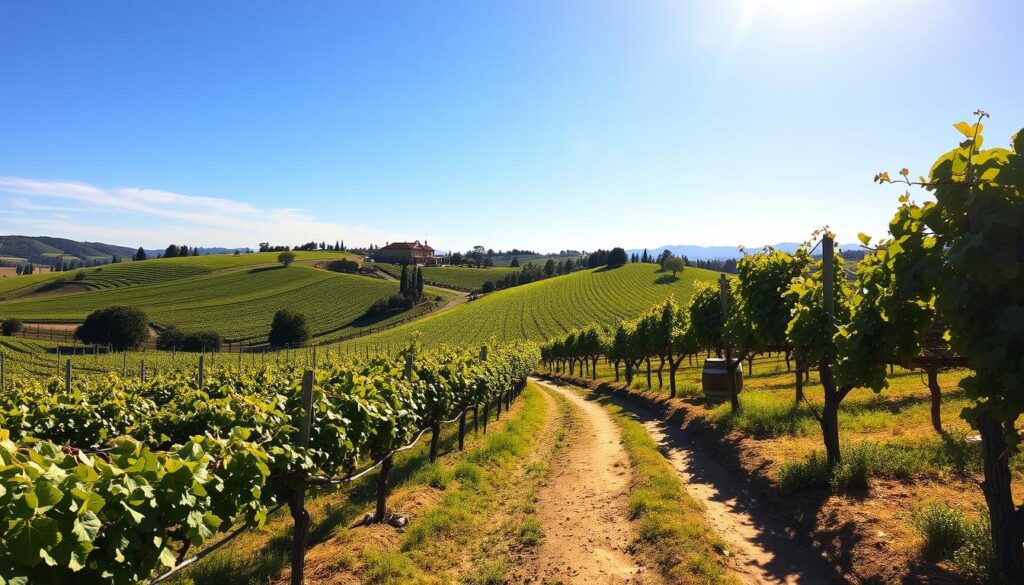
Wine lovers can further delight in the chance to purchase wines from the wineries they visit, embracing the spirit of wine tourism that unites enthusiasts globally.
| Type of Experience | Average Cost (€) | Locations Available |
|---|---|---|
| Standard Wine Tour | €15.00 – €60.00 | 150+ destinations worldwide |
| Premium Wine Experience | €60.00 – €180.00 | Includes top-rated wineries |
| Unique Activities | Varies | Flight experiences, blend creation, and more |
With a growing number of wine tours and tasting options available, from casual to high-end experiences, the journey through the beauty of California wine country and beyond becomes an unforgettable adventure for your palate.
Conclusion
Exploring the world of wine is an enriching journey filled with delightful flavors, fascinating history, and unique experiences. Each bottle tells a story, reflecting not only the vineyard’s terroir but also the winemaker’s dedication to quality. Whether you are venturing into the nuances of red Burgundy wines or savoring the freshness of a California Chardonnay, you are embarking on your own wine adventures.
As you dive deeper into the art of tasting and the intricacies of winemaking, you’ll discover that understanding grape quality and production methods are vital to appreciating each wine’s uniqueness. The choice of oak treatment during aging, for example, can significantly influence the final flavor profile, further emphasizing the beauty of exploring wine.
Ultimately, embracing the various aspects of wine culture invites you to broaden your palate. From meticulous grape harvesting to the serene atmosphere of a vineyard visit, your exploration doesn’t just end with a glass; it opens the door to a world of discovery that can last a lifetime. So, continue your journey, and let curiosity guide your taste as you savor the joy and elegance of every sip.
